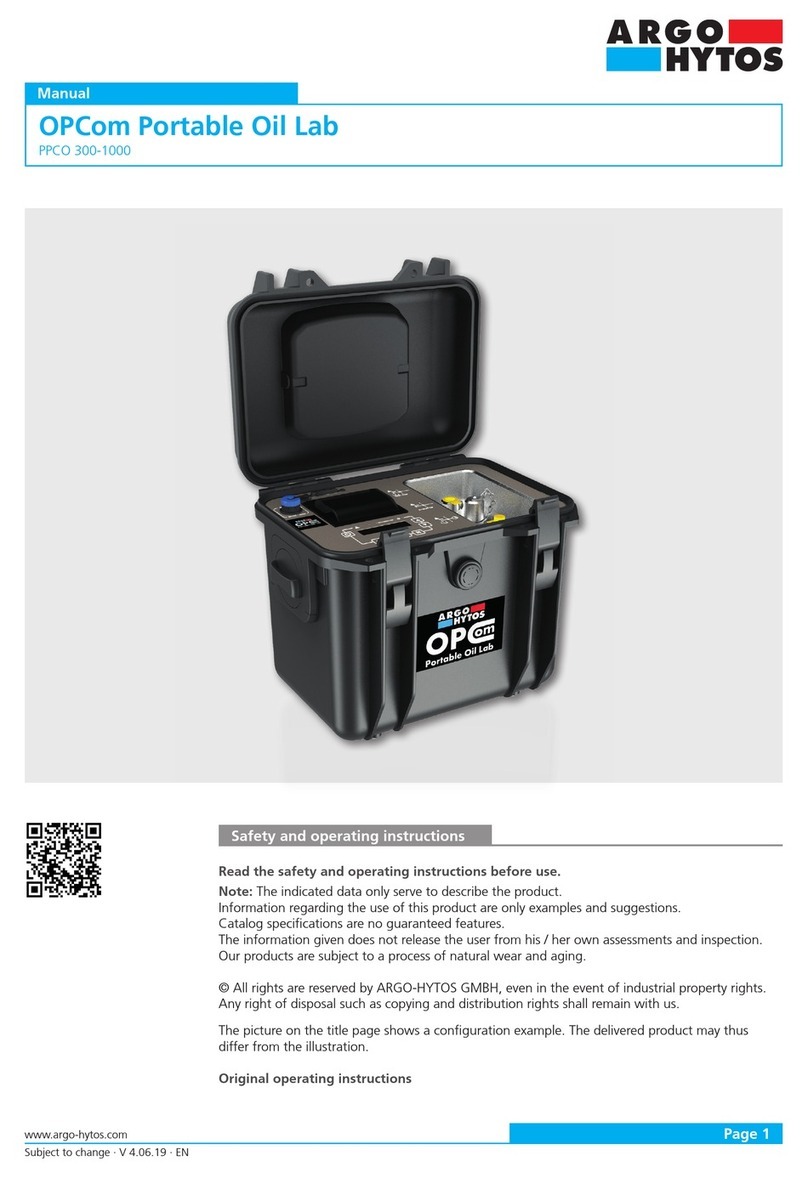
Subject to change · V 2.02.20 · EN
Page 3
www.argo-hytos.com
11.2.1 Time-controlled measurement ...................................................................................................................................23
11.2.2 Digital I/O ..................................................................................................................................................................23
11.2.3 Button .......................................................................................................................................................................23
11.2.4 Automatic .................................................................................................................................................................24
11.3 Alarm configuration...................................................................................................................................................24
11.3.1 Alarm type.................................................................................................................................................................24
11.3.1.1 Standard alarm ..........................................................................................................................................................24
11.3.1.2 Filter mode ................................................................................................................................................................25
11.3.1.3 Temperature alarm.....................................................................................................................................................25
11.3.2 Alarm memory...........................................................................................................................................................25
11.3.3 Low-pass filter ...........................................................................................................................................................25
11.4 Configuration analog.................................................................................................................................................26
11.5 Standard....................................................................................................................................................................27
11.6 Configuration flow ....................................................................................................................................................27
11.6.1 Automatic .................................................................................................................................................................27
11.6.2 Fix .............................................................................................................................................................................27
11.7 Communication.........................................................................................................................................................27
11.7.1 Type...........................................................................................................................................................................27
11.8 Baud rate CAN ..........................................................................................................................................................28
11.8.1 Node ID CAN.............................................................................................................................................................28
11.8.2 Baud rate RS232........................................................................................................................................................28
11.8.3 Automatic transmission .............................................................................................................................................28
11.9 Configuration display.................................................................................................................................................29
11.10 Sensor parameter ......................................................................................................................................................29
11.10.1 Measurement results..................................................................................................................................................29
11.10.2 Electronics .................................................................................................................................................................29
11.10.3 Operating hours ........................................................................................................................................................30
11.10.4 Error info ...................................................................................................................................................................30
11.10.5 Flow settings .............................................................................................................................................................30
11.11 Language ..................................................................................................................................................................30
12. Calibration...............................................................................................................................................................31
12.1 Calibration note.........................................................................................................................................................31
13. Analog current output (4...20mA) .........................................................................................................................32
13.1 Measurement without load resistance .......................................................................................................................32
13.2 Measurement with load resistance.............................................................................................................................32
13.3 Configuration ............................................................................................................................................................32
13.4 Conversion of the analog current output to the ordinal number.................................................................................32
13.5 Sequential data output for ISO 4406:17 and SAE AS 4059E.......................................................................................33
14. Switching inputs and outputs ...............................................................................................................................34
14.1 Digital input...............................................................................................................................................................34
14.2 Switching output .......................................................................................................................................................34
14.2.1 Option 1....................................................................................................................................................................34
14.2.2 Option 2....................................................................................................................................................................35
15. Communication RS232............................................................................................................................................36
15.1 Interface parameters..................................................................................................................................................36
15.2 Read commands .......................................................................................................................................................36
15.3 Configuration commands ..........................................................................................................................................38
15.4 Checksum calculation (CRC) ......................................................................................................................................41
16. Communication CAN ..............................................................................................................................................42
16. 1 CANopen ..................................................................................................................................................................42
16.1.1 „CANopen Object Dictionary“ in general...................................................................................................................43
16.1.2 CANopen Communication Objects ............................................................................................................................43
16.1.3 Service Data Object (SDO)..........................................................................................................................................44
16.1.4 Process Data Object (PDO) .........................................................................................................................................46
16.1.5 PDO Mapping............................................................................................................................................................46
16.1.6 „CANopen Object Dictionary“ in detail......................................................................................................................48
16.2 CAN J1939 ................................................................................................................................................................53




























